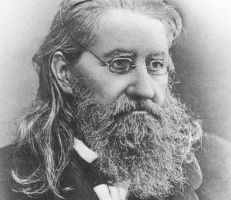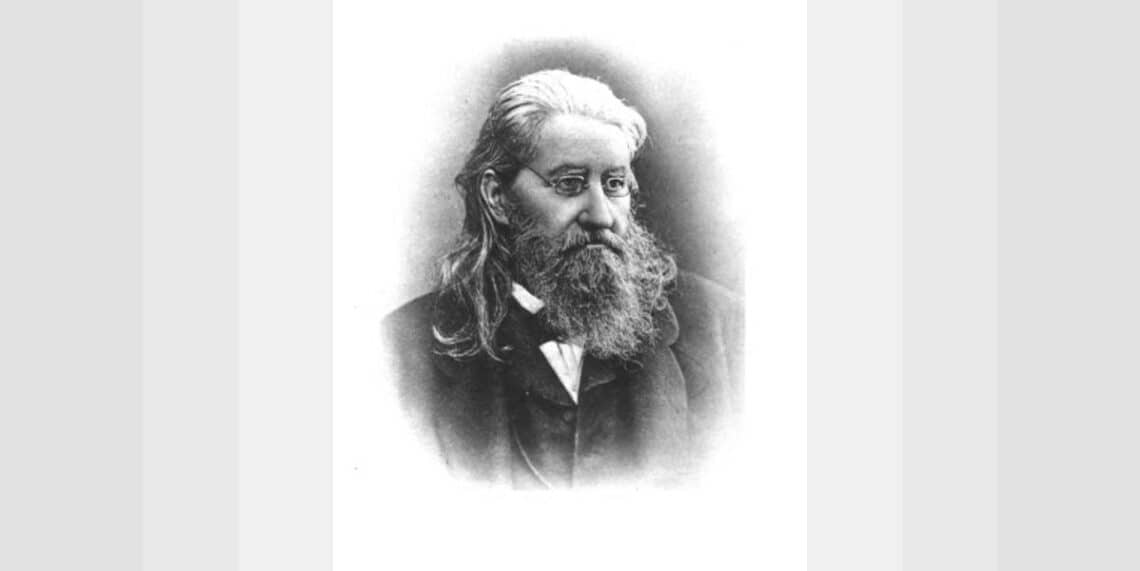In honour of Dr. Constantine Hering’s birthday (January 1st of 1800), I invite you to briefly review the biographical sketch of Hering’s early life, as reported by his colleagues in 1880.

Constantine Hering
His father published numerous works of instruction in the art of music. In his humble home he strove to surround his little ones with refining influences. He maintained that early impressions were powerful in influencing later life, and enthusiastically strove to banish from his home all that was not good.
His family consisted of three daughters and four sons. One of the sons, Carl, was regarded as the best musician in Europe. His other son, Constantine, was born on the first day of January of 1800, consequently he could claim to be one of the first men of the new century. A day or two afterwards he was baptized and named Constantine. In giving him this name, which had been borne by a child that had died, the father showed himself above a popular superstition.
The early teachers of Dr. Hering were people of like character to his father. One in particular, August Rudolph, an excellent mathematician, he always spoke of with adoration. Lehrer Rudolph taught him to love mathematics as a science, notmerely the dry formulas, but as a revelation of the laws of being. However, Constantine preferred to study plants, insects, and stones.
It was during Hering’s boyhood that the Old World was all in a tremble under the footsteps of the First Napoleon. Dr. Hering had vivid recollections of the time before and after the battle. A portion of the French army on its way to Russia passed through Saxony, and a small company halted before the house of Hering and demanded food. Constantine, a twelve year-old, ran out with a fresh loaf of rye bread, which an officer took only to fling it on the ground where it was kicked about by the soldiers. “It’s good bread,” cried Constantine, “my mother made it; don’t you know God will punish you for throwing bread away?” The men said nothing and passed on.
The first stimulus to a love of the natural sciences Constantine received when he found on his father’s grapevine the caterpillar named Sphynx Atropos. This Atropos, followed in later years by the Lachesis. He often said: “The destinies have come to me in reverse order.” First came Atropos, the inflexible, who cuts the thread of human life, next Lachesis who spins it, and finally Clotho holding the distaff”. He likened his work of writing the Materia Medica to the spinning of threads for a fabric, and when the web was well begun, he said: “When I shall be called hence the work will be left on the loom for other hands to weave.”
When the boy’s mind had received the impulse to study Nature’s works he became enthusiastic in pursuit of knowledge. The collection of insects, stones, and plants busied him in all the hours that could be spared from school. He made long excursions to the neighbouring hills and valleys and returned laden with minerals for his cabinet, or plants for his herbarium.
In 1817, young Constantine was sent to an academy in Dresden where he studied surgery. For nine years, from 1817 to 1826, Dr. Hering’s life was the life of a student. He was nick-named by his fellow-students “Wisent”, on account of his energy to study. He struggled long with poverty and his hardships were many. He first became interested in Homoeopathy when engaged to write against it. His work was to be published by Baumgaertner. Then he examined the Materia
Medica of Hahnemann. When nearly done the book, he came across Hahnemann’s challenge: “Disprove, ere you condemn!” He continued his investigations.
Some mysterious agency seemed to him to lead him on to the belief that Hahnemann had found the truth. The book was never published. An old friend, an apothecary, was delighted to hear that he was writing against Homeopathy, but when he went to this friend one day for a tincture of Peruvian bark, wanting it, as he told the apothecary, for a homoeopathic proving, the man of the shop said: “My young friend, don’t you know there is danger in that?” Constaintine replied that he was a student of mathematics and believed he could distinguish the true from the false. From that moment his old friend and other friends turned their backs on him. They said he was crazy, and he became, as he said, a fanatic in the cause of Homeopathy!
A remarkable personal experience had a decisive effect in his conversion to the new therapeutics. In making an autopsy on the body of a suicide exhumed by the authorities, he was so unfortunate as to take into his system, through one of his fingers, some of the poison engendered in the decomposition of the dead. After some days the wound became gangrenous. Leeches, calomel and caustics were of no avail. Amputation as a last resort was rejected, as the loss of his hand would be fatal to his profession, and he would rather die than suffer it. He was at the time still under the old impression that it was absurd to suppose external diseases to be within reach of internal remedies, and he met with ridicule the proposition of an older disciple of Hahnemann to treat him with homoeopathic pellets.
Nevertheless, to please his friend, but with no idea of receiving any benefit, he consented to take minute doses of Arsenic. With the sense of relief that came to him as the wound began to heal, the light of the new art of healing broke upon him. He said: “I owed to it far more than the preservation of a finger. To Hahnemann who had saved my finger, I gave my whole hand, and to the promulgation of his teachings, not only my hand, but the entire man, body and soul.”
Here is another powerful quote from Dr. Hering:
“I was dependent upon the school for support. I went to the place where my weekly expenditure was paid and asked for the allowance that was due me. I received the money, but was told that I should have no more unless I gave up dabbling in Homeopathy.I resented this insult by throwing the money which the chief of the institution had just paid me, at his feet, at the same time exclaiming: I shall never touch another penny of this money. From that moment I never suffered. As long as I live I will work for Homeopathy with all my power.”
He no longer suffered and his success continued.


